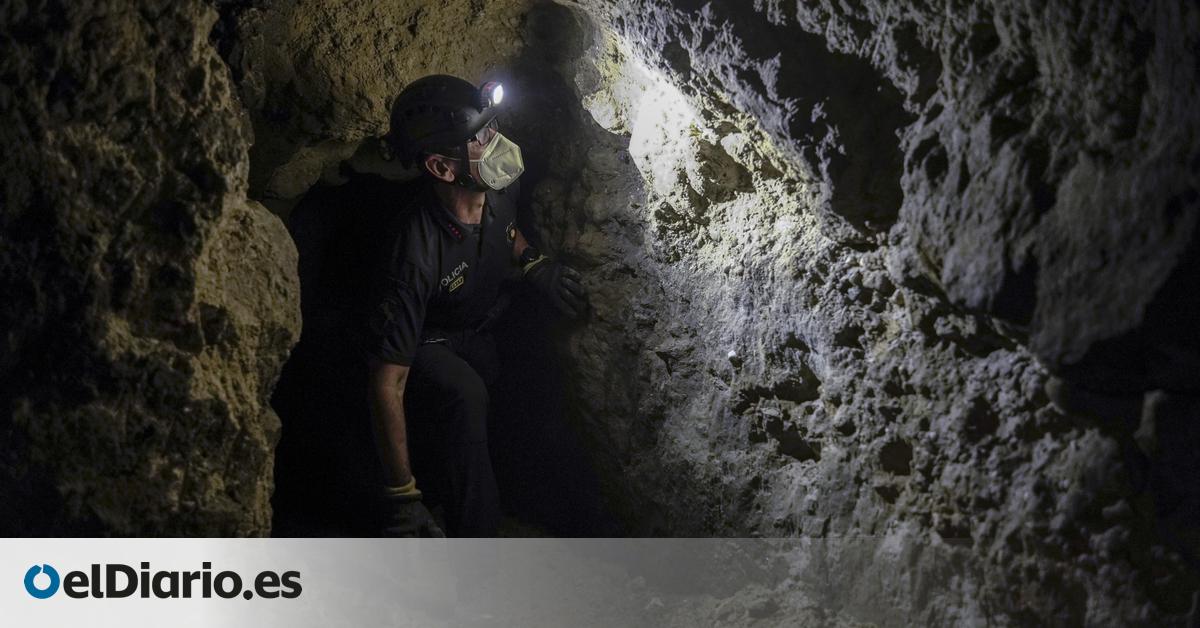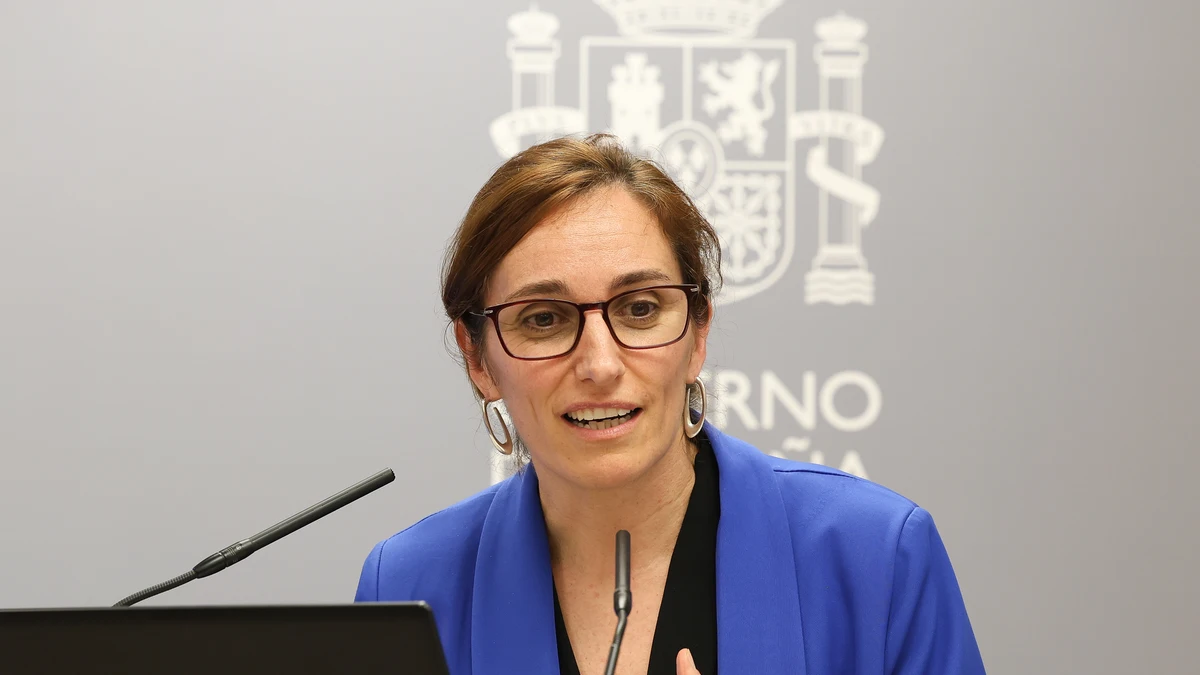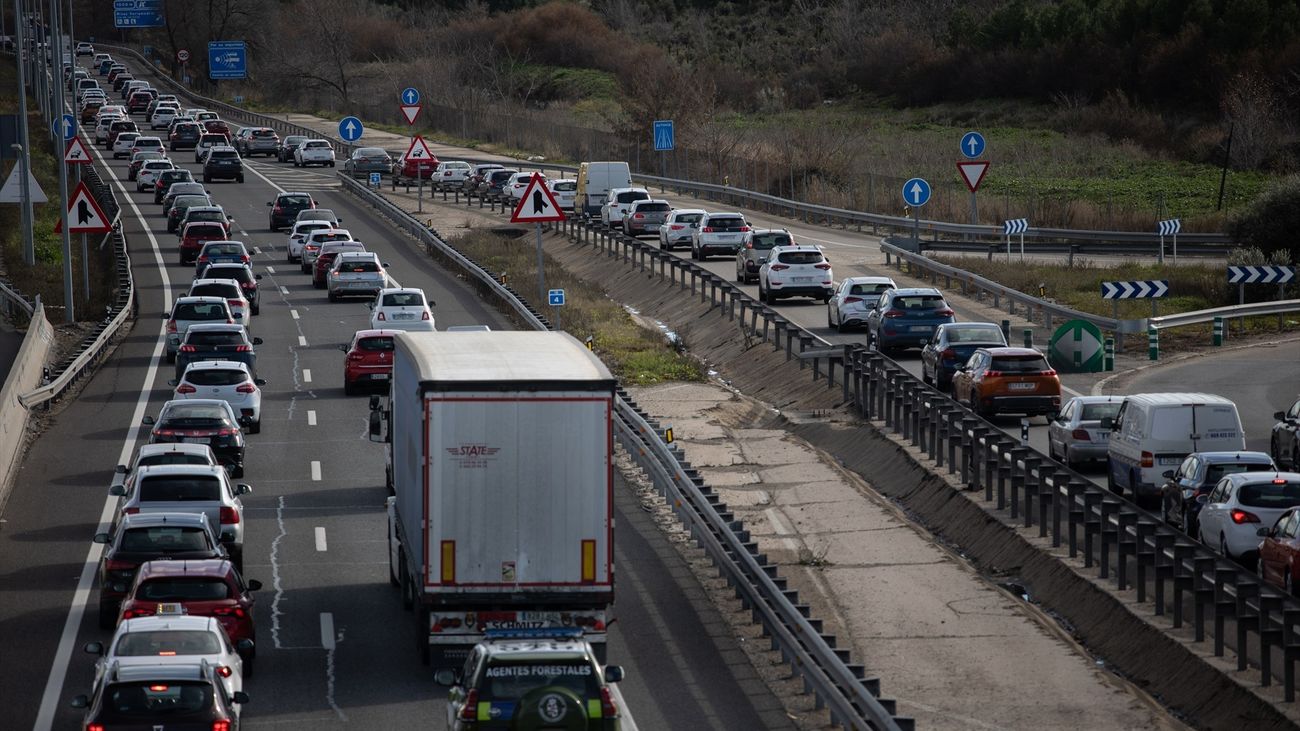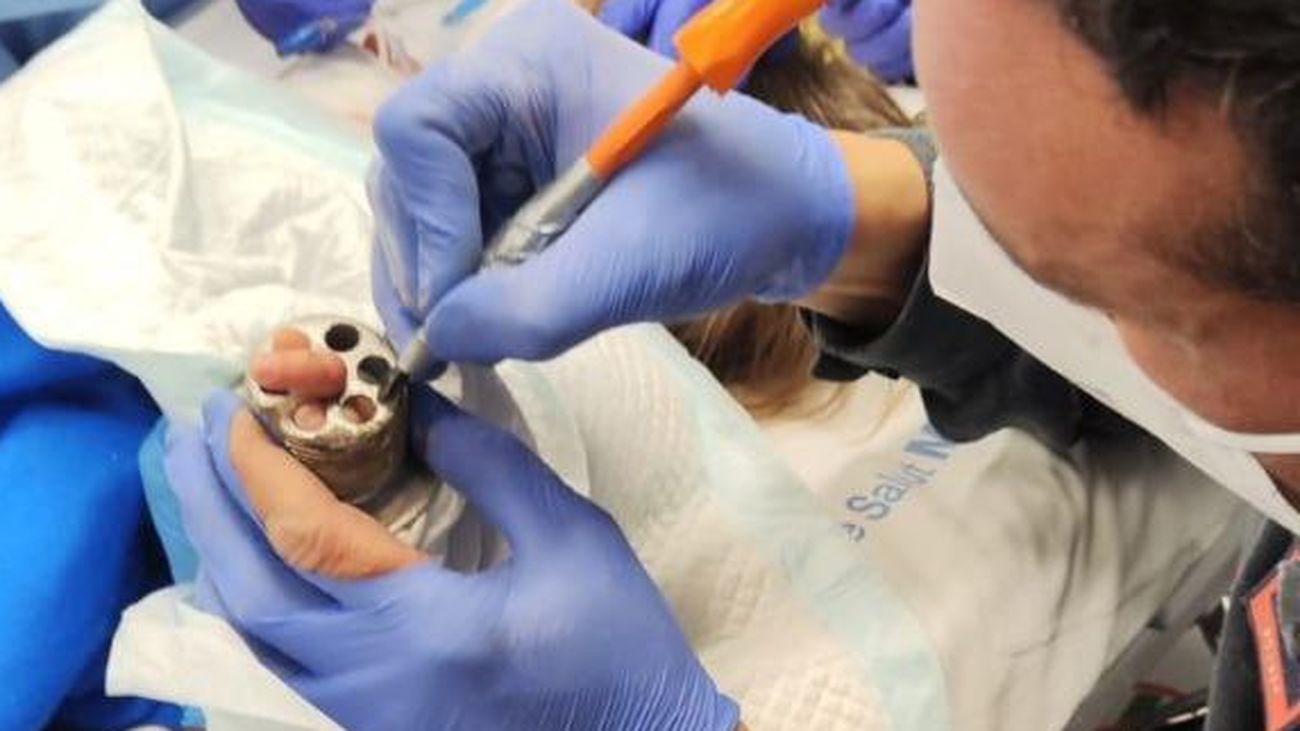The secret refuge that Companys had built next to the Palau de la Generalitat

"When they gave me the folder with the map, I pressed it against me and I was cold." Josep Maria Contel, president of the Taller d'Historia de Gràcia and a student of the anti-aircraft shelters of the Civil War, knew that he had something important when they sent him some yellowish plans, dated December 1937 and with a heading: Refuge project at the Palau de la Generalitat de Catalunya. It was the first chapter of an adventure that has lasted four years and has allowed the Government to discover an air-raid shelter, designed by the Executive of Lluís Companys, which connects with the Palau de la Generalitat and which is located below an adjacent square.
Know more
During the complex excavation that has been carried out in secret under the headquarters of the Government, a gallery that leads to the refuge has also been discovered, built in 1645 during the Guerra dels Segadors and that archaeologists believe was designed to be able to escape from the Palau . Last Wednesday, elDiario.es entered this venue for the first time, which has been kept away from the spotlight for security reasons.
Contel continued inquiring after obtaining the plans. Until that moment, an air-raid shelter located under the Palau was known, which during the dictatorship served as the archive of the Diputación de Barcelona. But the plans he obtained showed that there was a corridor that connected that room with another shelter just as large and of which there was no news. After a few months he came across some photographs on Facebook that caught his attention: some workers were seen opening a large hole a few meters from the Generalitat at the beginning of 1938. It had to be the refuge indicated by the plans.
He tried several times to obtain a permit to enter the Palau to look for signs of the lair, but always received a negative response. Until he met Lluís Vivancos, chief inspector of the Mossos d'Esquadra underground unit. He showed him the maps and photos he had and everything was activated in the Department of the Presidency of the Generalitat.
"As it is an infrastructure associated with the Palau, we think it would be interesting to investigate," explained this policeman last Wednesday. "The photos proved that what appeared on the maps was built and we began a process to discover possible access to the place." Some fractures in the plaster of a wall of the basement of the Palau coincided with the door projected in the plan. It was late 2016 and they started digging.
While the Government's offices were experiencing the most turbulent moments of Catalan politics in recent decades, a team of archaeologists, Mossos and heritage experts quietly and slowly advanced their work in the basement of the Palau. Independent technicians also collaborated, members of the Polytechnic University of Catalonia, the Barcelona Institute of Culture ... Dozens of people involved in digging a tunnel who did not know where it would take them.
"At the end of '37 the bombing of Barcelona began and the Generalitat and the City Council began to design shelters after creating the Passive Defense Boards," said Xavier Maese, an archaeologist from the Generalitat who also participated in the excavations. This expert explained that more than 1,300 spaces were projected that were registered in a census. At the same time, dozens of government shelters such as the one in the Palau were built that were not listed in any document. "We believe that this space was intended to protect the Generalitat staff and later it was also opened for the residents of the Gothic Quarter," the archaeologist continued.
The period in which it was built was the bloodiest of the Civil War in Barcelona. After becoming the provisional capital of the Republic at the end of October 1937, in January 38 a series of air strikes of unprecedented magnitude left hundreds of civilians dead in the city. The harassment from the sky would be repeated during the following months until the attacks in March of that year, when Italian planes again primed the Catalan capital: some historians put the March bombings at 800 deaths, others raise the figure to 2,000 deceased, including more than 100 children.
A complex excavation
It was not easy for the Mossos and the technical team to open the first hole in a wall in the basement of the Generalitat. The sturdy wall was over a meter wide, and the access door was much lower than what was shown on the plans. Then the first surprise would come: behind the wall there was not a concrete gallery, as expected, but a stone tunnel, much older, which at that moment was totally blocked with rubble.
"The first surprise was to meet that gallery," recalled Júlia Roca, head of heritage at the Palau de la Generalitat. Then the delicate task of emptying the gallery began. The corridor is barely a meter high and has steep curves, nothing to do with the one that appeared in the Government of Companys project. To walk through it you have to go completely crouched, almost squatting, avoiding a multitude of stones and rocks that constantly hit the helmet of the person walking.
The difficulty to continue advancing was such that in 2017 the team gave up. "We saw everything too unstable and we decided not to continue," said Vivancos, the head of the Mossos underground. The uneasiness spread in a team that had been working without making noise for a year and that reported directly to the presidency: first to Carles Puigdemont, then to Quim Torra.
When they had already thrown in the towel, a small landslide showed them that the road continued. They rebuked the works and after a while they discovered the inscriptions that gave information about this mysterious corridor: it had been built in 1645, during the Guerra dels Segadors, and it contained an inscription: P. Pau. Archaeologists attribute it to the figure of Pere Pau Ferrer, a municipal architect from the second half of the 17th century. "We do not know where this gallery evacuated in the seventeenth century because it is interrupted by the shelter that Companys ordered to build," pointed out Maese, from the archeology service. "But it is not unusual to find galleries of this type that connect with a shelter built centuries later."
Graffiti, hieroglyphs, shoes, clothes ...
It was not until 2019 that the excavators managed to reach the refuge they were looking for. The first to enter were the Mossos for security reasons. Then the rest of the team. "The feeling of finding a refuge that was unknown and that no one had accessed in 80 years was unique," Maese recalled from this place located five meters underground.
The researchers found several elements that allowed them to get an idea of what was experienced there: shoes, pieces of clothing, metal cans of preserves, coins, bracelets ... Also painted on the walls of all kinds: from children's drawings to painted hieroglyphs by adults. The electrical installation of the shelter gave them indications that it had been used and some stairs at the other end of the enclosure - full of rubble - showed that the space also had direct access to the street.
"The shelter was never finished, but it was used during the bombings," said Roca, the head of Heritage. The plans show an enclosure with all kinds of comforts: from the telephone operator's room to the toilets, closets ... None of this was ever installed, something that experts attribute to the magnitude of the bombings, improvisation during the war and the lack of materials and manpower as the conflict progressed.
Contel, a student of shelters for 25 years, acknowledged on Wednesday that this enclosure was one of the most relevant discoveries of his career. "Each refuge has its peculiarities," he said, still sweaty, after climbing steep brick stairs to get out of the basement. "But the most special thing is finding one that connects with the Generalitat and that had remained in oblivion until now."










